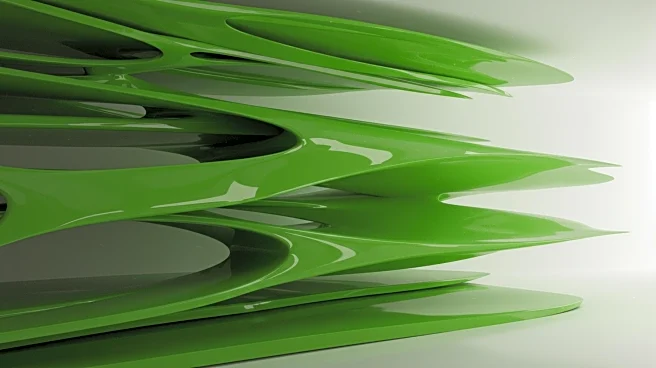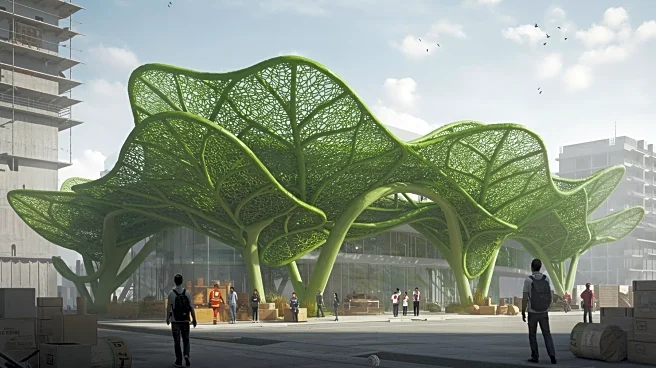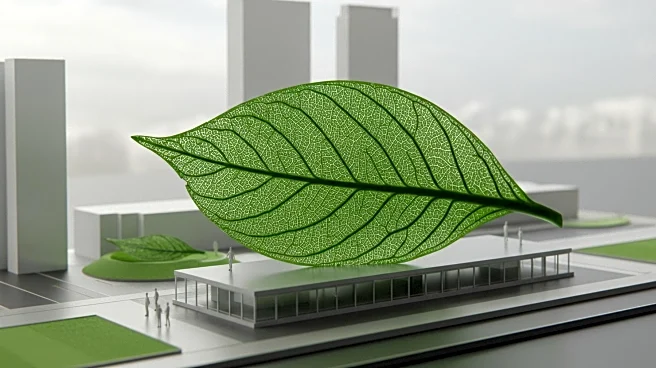What's Happening?
Researchers at ETH Zurich have created a photosynthetic material that can be 3D-printed into architectural elements, hosting cyanobacteria that capture carbon dioxide. This innovative material was showcased at the Canada Pavilion in the Venice Architecture Biennale. The cyanobacteria use sunlight to grow biomass and form minerals that trap carbon dioxide, potentially reducing the climate impact of construction materials. The installation serves as both a scientific experiment and a public demonstration, adapting the pavilion to provide optimal conditions for the cyanobacteria.
Why It's Important?
Construction materials, particularly concrete, contribute significantly to global pollution. This new material offers a potential solution by integrating living organisms that can reduce the carbon footprint of buildings. If successful, it could complement efforts to cut pollution from cement manufacturing and improve air quality. The development aligns with global initiatives to address climate change and promote sustainable practices in construction, potentially influencing industry standards and practices.
What's Next?
Further research is needed to assess the stability, safety, and maintenance of the material at scale. The carbon capture capabilities must be verified outside controlled settings. The team is exploring real-world applications, such as a shingle-clad facade where microbes create a green patina. Success in these areas could lead to broader adoption in the construction industry, contributing to climate change mitigation efforts.














